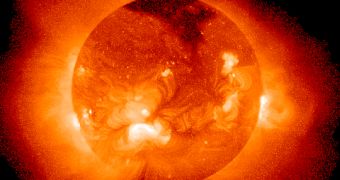Only recently, the National Oceanic and Atmospheric Administration (NOAA) completed its research on summer temperatures worldwide.
Their findings, published in the State of the Climate Global Analysis for May 2012, are rather staggering: throughout the past few weeks, most regions of the globe had experienced extreme weather conditions in terms of heat.
Thus, the report indicates that this year's summer is the hottest one in our recorded history, the all-time record being set not very long ago, in 2010.
By comparison to average temperatures from 1961-1990, May 2012 brought us a significant increase in land and ocean average surface temperature.
According to ENN, global average temperatures are now higher by 0.66 degrees Celsius (1.19 degrees Fahrenheit). Apparently, this is due to the land areas getting warmer each year, as ocean temperatures are not all that prone to temperature fluctuations.
What is even more alarming is that, as far as the northern hemisphere is concerned, this particular month seems to have been the hottest so far.
As climatologists explain, this year's May only came second after the one in 2010 because global ocean waters helped “cool off” the average temperatures worldwide. However, land temperatures for the May of 2012 remain the highest in history.
Moreover, it seems that natural phenomena such as storms and hurricanes, which typically occur in certain periods of the year, are starting to respond to these climate changes.
Meteorologists inform us that two tropical storms took place in the Northern part of the Atlantic Ocean way before the 1st of June, which is the official day for the opening of the “hurricane season.”
As we already discussed in one of our previous articles (which you can read here), it seems that the weather phenomenon known as El Niño is making a comeback.
This particular piece of information can and should trouble us at least to some extent, as El Niño is usually linked to droughts, increased sea temperatures and powerful storms.

 14 DAY TRIAL //
14 DAY TRIAL //